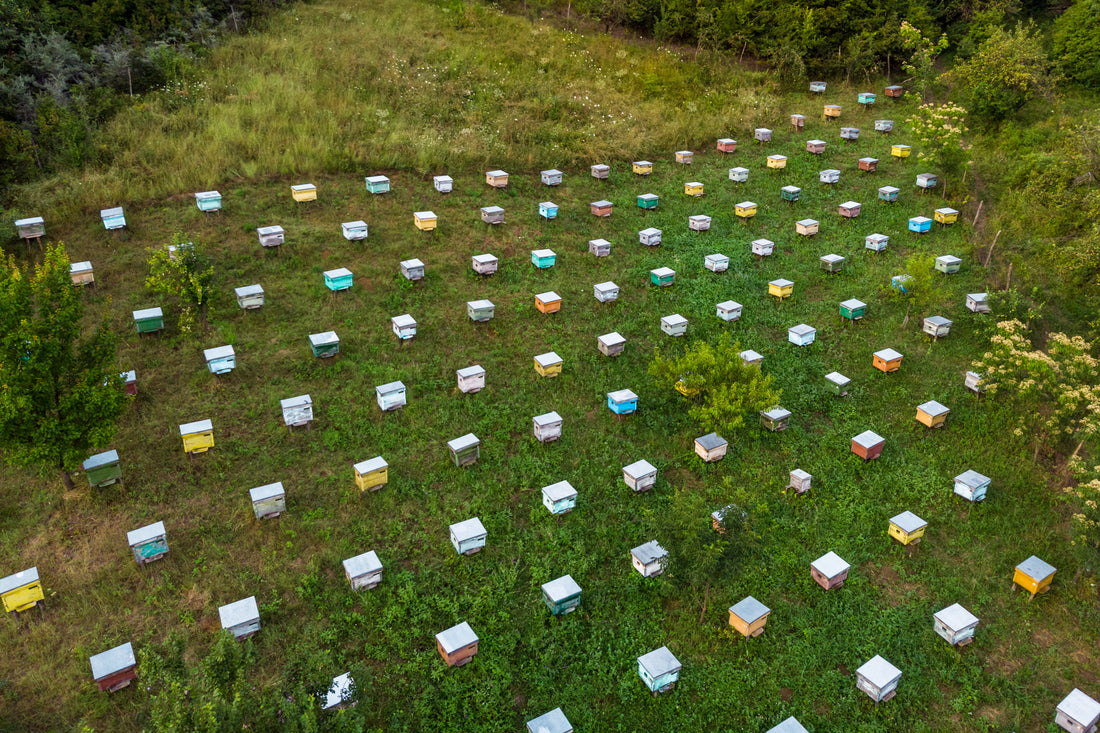Introduction
As we marvel at the sight of bees buzzing around, gathering nectar from flowers, it's easy to overlook the intricate and fascinating social structure within a beehive. Bees, those tiny yet mighty creatures, live in highly organized colonies, each with its own roles and responsibilities. In this blog post, we will delve into the captivating world of bee society and explore the captivating social structure that governs their lives.
1. The Hive: A Home Sweet Home
At the heart of a bee colony lies the hive, a bustling metropolis built with utmost precision. The hive serves as both a shelter and a place where the bees carry out their daily activities. Constructed from beeswax secreted by the worker bees, the hive is a masterpiece of architecture, consisting of hexagonal cells where bees store honey, pollen, and raise their young.
2. Queen Bee: The Matriarch
Every hive has a queen bee, the undisputed ruler and matriarch. The queen's primary responsibility is to lay eggs, as many as 2,000 eggs per day during peak seasons. Her pheromones also play a vital role in maintaining unity and order within the colony. The workers attend to her every need, ensuring her comfort and protection.
3. Worker Bees: The Multitasking Superstars
The majority of bees in the colony are worker bees, and they are the backbone of the hive. Female worker bees are responsible for numerous tasks, including foraging for nectar, pollen, and water, tending to the queen and the brood (young bees), guarding the hive, and producing beeswax to expand the comb. These tireless multitaskers ensure the smooth functioning of the hive.
4. Drones: The Gentle Giants
Drones are the male bees in the colony, and their primary purpose is to mate with a queen from another hive. They have no stingers and do not participate in hive tasks like foraging or guarding. Once they mate, their life's purpose is fulfilled, and they are expelled from the hive before winter. This drastic measure ensures that resources are conserved for the survival of the essential worker bees during the colder months.
5. Communication through Dance: The Waggle Dance
Believe it or not, bees have a unique form of communication called the "waggle dance." Worker bees perform this intricate dance to convey information about the location of a food source to other bees in the hive. Through the duration and direction of the dance, they provide precise details about the distance and direction to the food, allowing other workers to find it efficiently.
6. Swarming: A Natural Phenomenon
Swarming is a mesmerizing spectacle in the bee world. When a hive becomes overcrowded, a new queen is raised, and the old queen, accompanied by thousands of worker bees, leaves the hive in search of a new home. This swirling mass of bees in flight can be awe-inspiring, and they eventually settle on a temporary spot before selecting their new permanent residence.
Conclusion
The world of bee society is a complex and highly organized one, where each member plays a crucial role in maintaining the harmony and survival of the colony. From the industrious worker bees to the reigning queen and the fleeting drones, their interactions create a captivating social structure that ensures the continued success of the hive. Understanding the secret lives of bees deepens our appreciation for these remarkable creatures and highlights the essential role they play in our ecosystem. Next time you see a bee buzzing past, take a moment to marvel at the wonders of their social structure and the intricate dance of life happening within their hive.
